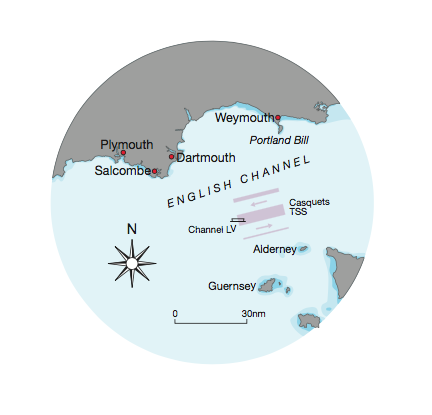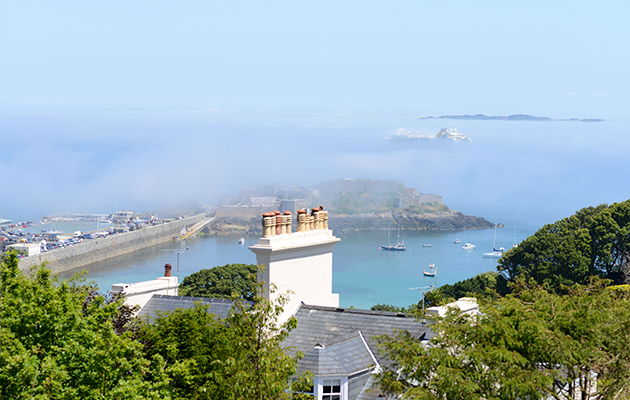James Stevens answers your questions of seamanship - this month, is radar enough for a foggy Channel crossing?
Question
Mike is in Guernsey on his first cruise on board Windshift, his newly purchased Beneteau First 310.
Windshift is well kitted out for offshore cruising with the normal safety kit: liferaft, lifebelts, radar, handheld and fixed DSC radio, chart plotter but no AIS, lifejackets, radar reflector and so on.

Mike has taken his RYA shorebased and practical RYA Coastal skipper courses. His crew, Louise, has taken her shorebased day skipper and has several years’ experience in cruising yachts.
Mike is trying to get back to the West Country to his home port of Plymouth. The shortest Channel crossing from Guernsey is to Dartmouth 71 miles away.
On the day he has planned to cross the Channel there’s a favourable tide in the morning but thick fog. The forecast is for fog patches all day across the Channel.
Visibility is less than 1 mile at the Channel Light Vessel, which is halfway across the Traffic Separation Scheme on their route.
The forecast wind, however, is SW 4 to 5, a perfect direction for a fast, comfortable crossing. The forecast tomorrow is for clear visibility but a NW 5 gusting 6 wind – right on the nose. It looks as if the northwesterly will stay for several days and Mike really needs to get back.
Windshift has radar, but Mike has never used it. He switches it on in the harbour and is confronted with a mass of targets, land and clutter on the screen.
However, he reasons that once in the open sea it should be pretty easy to spot the ships with no buoyage and land to confuse the picture.
His view is that they should leave and trust the radar to keep them out of trouble in the shipping lanes and listen out for fog signals.
Louise is pretty unhappy with this plan and the thought of crossing the shipping lane with only a sketchy idea of how to use radar sends a shiver down her spine.
On the other hand, if they delay they might be stuck there for days. Maybe they should go out and have a look, or possibly aim for another destination.
What would you advise?
Answer
Being able to see targets on the radar screen does not mean that you know how to avoid them. It is very different from AIS.

James Stevens, author of the Yachtmaster Handbook, spent 10 of his 23 years at the RYA as Training Manager and Yachtmaster Chief Examiner
Collision avoidance by radar involves a good knowledge of Rule 19. Stand on and give way vessels no longer exist in fog.
On most cross channel passages in good visibility, yachts have to make one or two alterations of course to avoid ships so it is likely some avoidance decisions are going to be necessary.
If a ship is travelling at 20 knots through fog you hear the fog signal twice before the bow is on top of you.
Mike is therefore taking a considerable risk by departing immediately. The radar reflector is a help but even with it, if the sea state is confused a yacht can become invisible to a ship’s radar.
If he goes out to have a look it’s going to be difficult to return against the tidal stream if the visibility remains poor. Alderney is an alternative but not significantly closer to the West Country.
My advice would be to stay in Guernsey until the weather clears.
If Mike and Louise want to get across the Channel the next day and avoid a long, hard beat across they could aim for Portland, which they could lay on one tack on a very fine reach.
The day after it should be a fine reach to Dartmouth or Salcombe.




